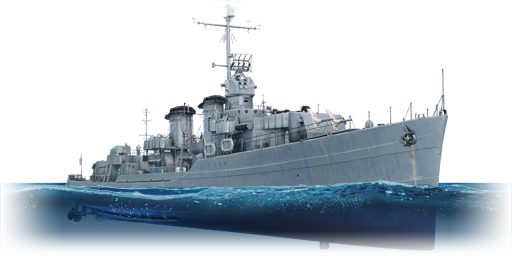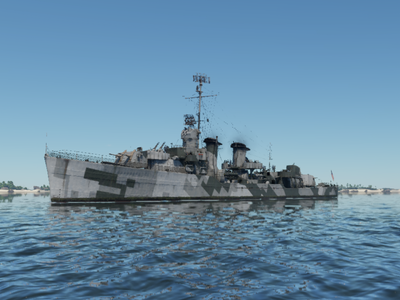The USS Phelps was a Porter-class destroyer. She was laid down on 2nd January 1934 and commissioned on 26th February 1935. She was named after US Navy Rear Admiral Thomas Stowell Phelps. She was initially built like standard Porter-class destroyer with four twin 5 inch gun mounts, but this configuration was changed in her 1944 refit for a two dual and one single 5-inch dual-purpose gun mounts as well as having more anti-aircraft guns added. During the attack on Pearl Harbor, she shot down one plane. After that, she served as a carrier escort. While in this role, she had to sink USS Lexington following the Battle of the Coral Sea as the ship had been badly damaged and it was decided to sink her to prevent her capture into Japanese hands. In 1942, she took part in the Battle of Midway and later on continued to participate in the Aleutian campaign. 1944 saw Phelps bombarding islands during the Marshall Islands campaign. In June, she took part in the bombarding of Saipan. After that, she left for the Mediterranean to perform convoy escort duties. She received twelve battle stars for her service. Phelps was decommissioned on 6th November 1945 and sold for scrapping on 10th August 1947.
USS Phelps was introduced during Update 1.95 "Northern Wind" as a reward for World War Season 2: Attack from the Sea. The Phelps as a Porter-class design features the same issues found on her sisters like USS Moffett or USS Porter. The extremely vulnerable magazines making the ship prone to fatal detonations. The revised main armament turret design and amount also further decreased firepower available from eight down to five guns.









 2 x (290 / 600) %
2 x (290 / 600) % 
 2 x 160 %
2 x 160 % 

